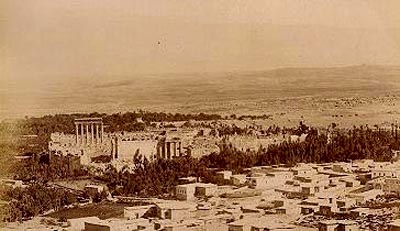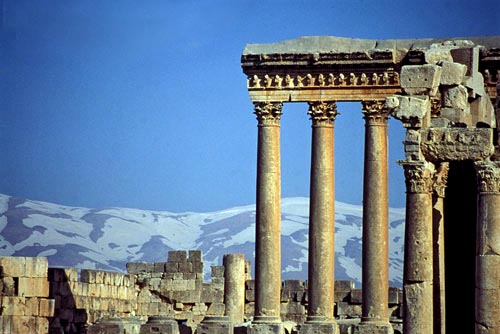Andrew Collins, investigates one of the world’s greatest enigmas – the Great Platform at Baalbek in Lebanon and uncovers its links with giants, Titans and a previously unknown culture.

Massive foundation stones of Baalbek.
In the recent past the tranquility of the Beqa’a Valley, that runs north-south between the Lebanon and Ante-Lebanon mountain ranges, has been regularly shattered by the screeching noise of Israeli jet fighters. Their targets are usually the Hizbullah training camps, mostly for reconnaissance purposes, but occasionally to drop bombs on the local inhabitants. It is a sign of the times in the troubled Middle East.
Yet the Beqa’a Valley is also famous for quite another reason. Elevated above the lazy town of Baalbek is one of architecture’s greatest achievements. I refer to the almighty Temple of Jupiter, situated besides two smaller temples, one dedicated to Venus, the goddess of love, and the other dedicated to Bacchus, the god of fertility and good cheer (although some argue this temple was dedicated to Mercury, the winged god of communication).
Today these wonders of the classical world remain as impressive ruins scattered across a wide area, but more remarkable still is the gigantic stone podiums within which these structures stand. An outer podium wall, popularly known as the ‘Great Platform’, is seen by scholars as contemporary to the Roman temples. Yet incorporated into one of its courses are the three largest building blocks ever used in a man-made structure. Each one weighs an estimated 1000 tonnes a piece.(1) They sit side-by-side on the fifth level of a truly cyclopean wall located beyond the western limits of the Temple of Jupiter.
Read the rest








